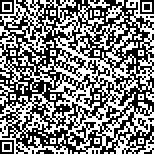| This article has been:Browse 999Times Download 991Times |

scan it! |
|
|
| DOI:10.13522/j.cnki.ggps.2020459 |
|
| Using MODIS-EVI to Identify Cropping Structure in Plains Along the Yellow River in Inner Mongolia |
|
JIA Bozhong, BAI Yanying, WEI Zhanmin, YAN Dong, ZHANG Zhiyin
|
|
1. College of Water Conservancy and Civil Engineering, Inner Mongolia Agricultural University, Hohhot 010018, China;2. Soil Fertilizer and Water-saving Agriculture Workstation of Inner Mongolia Autonomous Region, Hohhot 010010, China
|
| Abstract: |
| 【Background and objective】Remote sensing has been increasingly used to monitor cropping structure at regional and continental scales because of its low cost and high precision. The purpose of this paper to use it to extract agricultural resource information in plains proximal to the Yellow river in Inner Mongolia, with a view to help improve agricultural managements in this region.【Method】Multi-temporal crop classification method considering seasonal change in characteristic traits of different crops was used to identify temporal change in the crops, from which a time series of enhanced vegetation index (EVI) were constructed for crops in the Yellow river plain in Inner Mongolia. Based on the difference in EVI between different crops, we estimated the planted areas of wheat, corn, sunflower, zucchini, tomato and alfalfa in the studied region. 【Result】Comparison with ground-true data showed the accuracy of the method for estimating planted areas of wheat, corn, sunflower, zucchini, tomato, alfalfa and other crops was 79.59%, 80%, 83.67%, 78.18%, 75.93%, 82.22% and 68.75% respectively, with their associated mapping accuracy being 78%, 80%, 82%, 86%, 82%, 74%, 74% and 66%, respectively. For example, data from the statistical bureau showed the planted maize areas in the studied region were 7 912.17 km2, while the areas estimated from our method were 7 412.75 km2, giving rise to a relative error of 6.31%. The overall classification accuracy for all crops was 78.29%, with the kappa coefficient being 0.747. 【Conclusion】The MODIS-EVI time series can be used to identify cropping structure at large scale with a reasonable accuracy, and can be used to aid agricultural and irrigation managements. |
| Key words: MODIS; EVI; time series; planting structure; plains along the Yellow river |
|
|